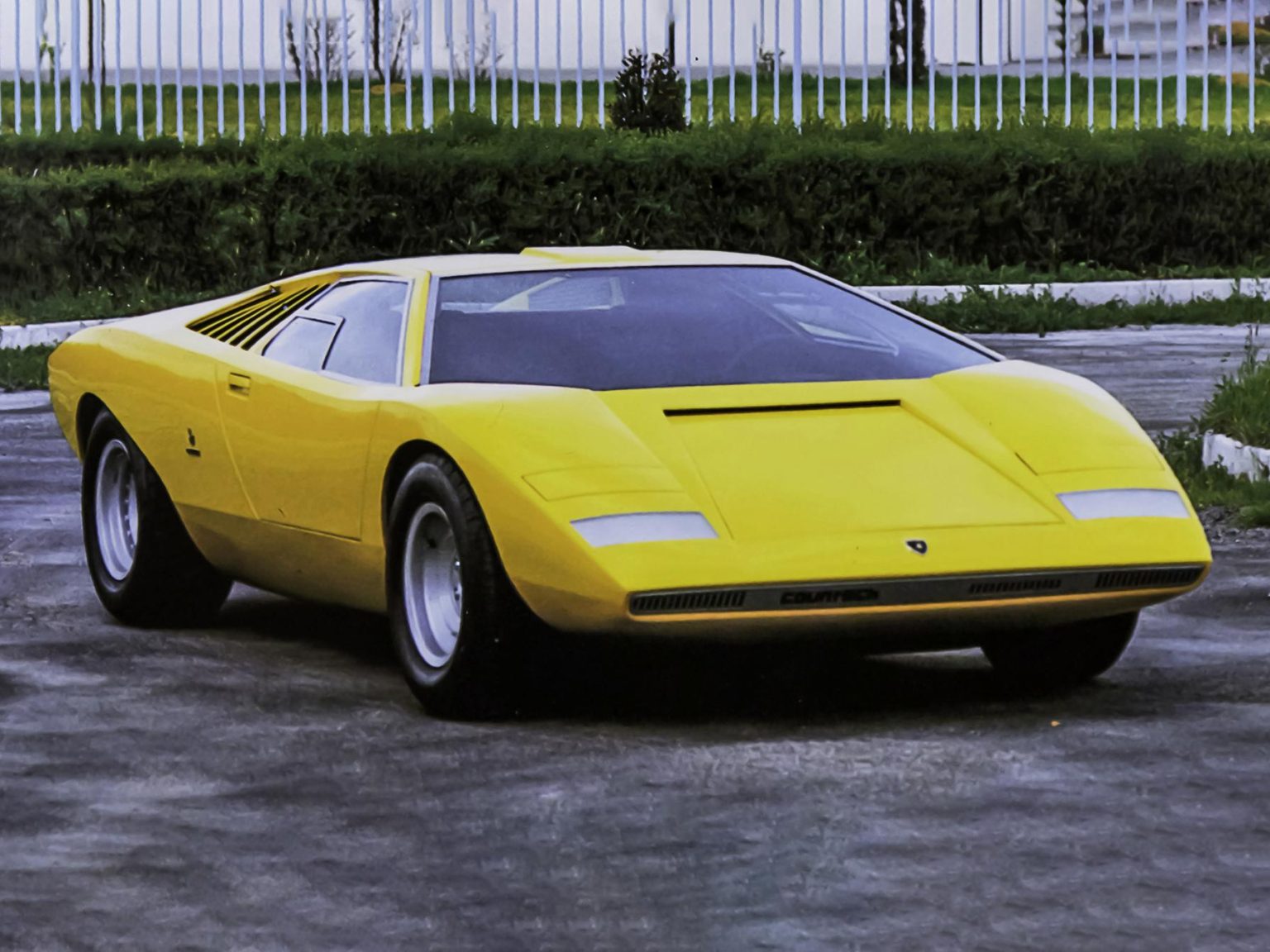Under the spotlights of the 1971 Geneva Auto Show, with actual film cameras with flash bulbs capturing every moment, the Lamborghini Countach LP 500 struck a post for the first time, dressed in yellow, inside the Carrozzeria Bertone event space just down from the debut of the Lamborghini Miura SV.
It was just 10 o’clock in the morning in Switzerland when the cover came off, but the enthusiasm surrounding the prototype’s appearance was so high, the Italian sports car company knew what they had to do. They needed to get some to customers. And quick.
In the weeks after its arrival, the Countach LP 500 was featured in all the international automotive magazines. The Countach project, codenamed LP112, was headed up by engineer Paolo Stanzani, who had been with Lamborghini since 1963, and in 1968 was named General Manager and Technical Director, responsible for the mechanical part of the Countach.
The body of the car was styled by Marcello Gandini, Design Director of Carrozzeria Bertone. At the time, scissor doors were a hallmark of Lamborghini’s 12-cylinder models so it was decided to use them on the Countach as well.
However, the LP 500 was substantially different than the Countach that would go into production in 1974. The homologated model would have its chassis changed out for one that was easier to fabricate and protect against corrosion.
After Lamborghini’s chief test driver Bob Wallace used the car for road testing, it was determined that the 12-cylinder 4971cc power plant. that was in the prototype was no good and that a different engine was required. A 3.9-liter engine was originally sold in the Countach with a 4.8-liter and a 5.2-liter eventually making their way under the hood.
Production or prototype, the car was unique for its time, and certainly a different take on Italian sports car design than the Miura that debuted at the same time.
Lamborghini models are feature unique names with none of the alphanumeric nomenclature that has become so commonplace today. Its origin story begins in the Piedmont region of Italy. The region – located in the center or a triangle from Milan, Italy to Grenoble, Switzerland to Genoa, Italy – is where the car was hidden during its final days of development.
A small shed traditionally used for agricultural machinery on a farm near Grugliasco, Italy was the home of the car. This allowed Lamborghini to avoid any work stoppages related to labor unrest that was happening in the country at the time.
Marcello Gandini, the designer of the Countach, explained the origin of the name in a story for Lamborghini’s website entitled “Not Just Bulls: the Creator Tells Us the Story Behind the Name Countach”:
“When we made cars for the car shows, we worked at night and we were all tired, so we would joke around to keep our morale up. There was a profiler working with us who made the locks. He was two meters tall with two enormous hands, and he performed all the little jobs. He spoke almost only Piedmontese, didn’t even speak Italian. Piedmontese is much different from Italian and sounds like French. One of his most frequent exclamations was ‘countach’, which literally means plague, contagion, and is actually used more to express amazement or even admiration, like ‘goodness’. He had this habit.
“When we were working at night, to keep our morale up, there was a jousting spirit, so I said we could call it Countach, just as a joke, to say an exaggerated quip, without any conviction. There nearby was Bob Wallace, who assembled the mechanics—we always made the cars operational. At that time you could even roll into the car shows with the car running, which was marvelous.
“So jokingly I asked Bob Wallace how it sounded to an Anglo-Saxon ear. He said it in his own way, strangely. It worked. We immediately came up with the writing and stuck it on. But maybe the real suggestion was the idea of one of my co-workers, a young man who said let’s call it that. That is how the name was coined. This is the only true story behind this word.”
From 1974 to 1990, 1,999 Countachs in five different series were produced, representing a model that, in addition to ending up displayed on the bedroom walls of an entire generation and being used in dozens of films, allowed Lamborghini to survive the most difficult years of its history, setting itself up for the success it has today.
What ever happened to the Countach LP 500? The car’s life was cut short. In 1974 it was scrapped.








